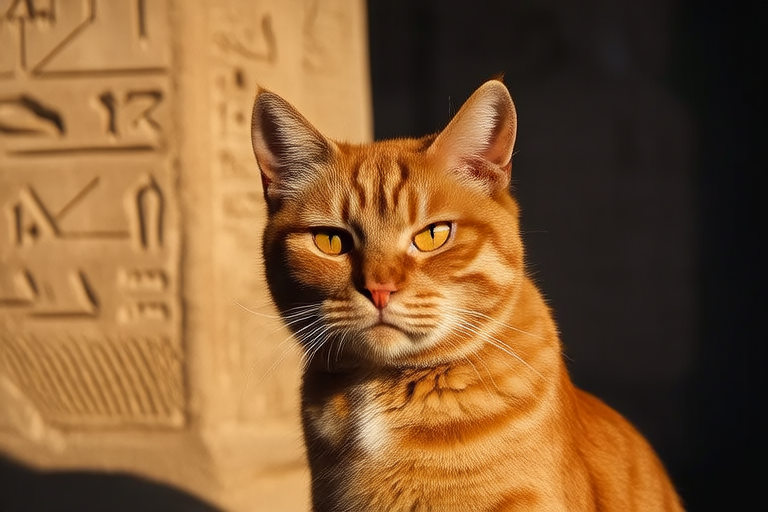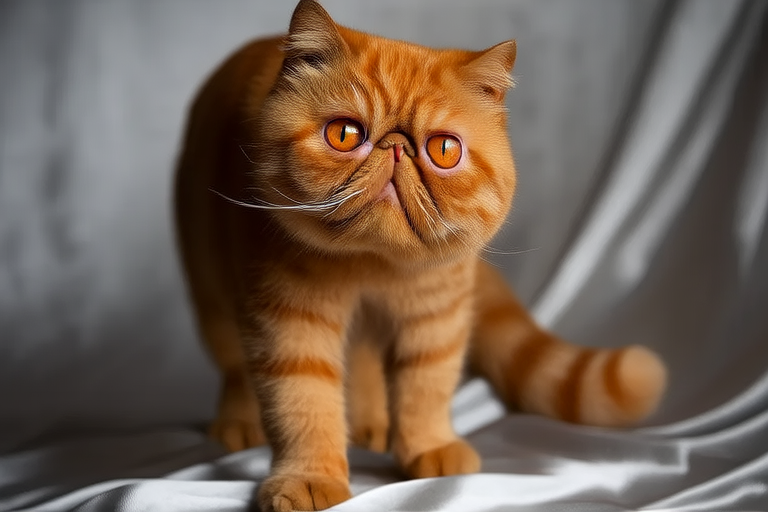
The Enduring Appeal of Abyssinian Cats
The Abyssinian cat is a breed steeped in history and myth, with origins that trace back to ancient Egyptian temples. These elegant felines have captivated human hearts for millennia, playing significant roles in religious ceremonies and daily life. This article explores the historical origins of Abyssinian cats, their significance in Egyptian culture, and their journey through time to become cherished pets worldwide.
Ancient Origins: The Abyssinian Cat in Egyptian Culture
Historians believe that the Abyssinian cat originated in ancient Egypt. These cats were highly regarded and played important roles in religious ceremonies and daily life. They were often depicted in hieroglyphics and sculptures, symbolizing protection, fertility, and good fortune. In Egyptian mythology, the goddess Bastet was often portrayed as a woman with the head of a cat, emphasizing the sacred status of these animals. Cats were believed to be the protectors of the home and were often mummified and buried alongside their owners to ensure safe passage into the afterlife.
Myths and legends surrounded these graceful creatures. One popular tale suggested that Abyssinian cats were the descendants of Ra, the sun god, which explains their striking resemblance to the wild African cats. Their golden coats were thought to be a reflection of the sun’s rays, and their almond-shaped eyes were said to possess the wisdom of the gods. This divine association elevated the status of these cats, making them objects of reverence and adoration.
Journey Through Time: From Egypt to the World
The transition of Abyssinian cats from ancient Egypt to other parts of the world was influenced by various historical events and figures. The Roman Empire, with its extensive trade routes and military campaigns, likely played a crucial role in spreading these cats beyond Egypt’s borders. Roman soldiers and merchants may have brought Abyssinian cats back to Europe as valued companions and symbols of luxury.
During the British colonial period, Abyssinian cats found their way to England. Sir Robert Napier, a British general, is credited with bringing the first Abyssinian cat to Britain in the mid-19th century. The cat, named Zula, was captured during the Abyssinian War and became a sensation in Victorian England. The breed gained popularity quickly, and selective breeding began to refine the physical characteristics of these cats.
Today, Abyssinian cats can be found in households across the globe. Their journey from ancient Egypt to modern homes is a testament to their enduring charm and adaptability.
Physical Characteristics and Unique Traits
Abyssinian cats are known for their distinctive appearance. They have a slender, muscular body with long legs, large ears, and a bushy tail. Their coat is short but dense, with a ticked pattern that gives them a shimmering, iridescent quality. Common colors include ruddy (a reddish-brown), blue, fawn, and cinnamon. Their eyes are typically green or gold, adding to their exotic allure.
In addition to their striking appearance, Abyssinian cats possess unique traits that set them apart from other breeds. They are intelligent, curious, and playful, often engaging in activities that keep them mentally stimulated. Their high energy levels make them excellent companions for active families. Abyssinians are also known for their affectionate nature; they enjoy interacting with their owners and forming strong bonds. However, they can be somewhat independent, requiring a balance of attention and space.
Care Requirements and Tips for Potential Owners
Proper care is essential for maintaining the health and well-being of Abyssinian cats. Regular grooming is necessary to prevent matting and remove loose hair. Their short coat requires brushing once or twice a week, but they may need more frequent grooming during shedding seasons. Bathing should be done only when necessary, as it can strip their coat of natural oils.
Feeding an Abyssinian cat a balanced diet is crucial for their overall health. High-quality commercial cat food formulated for their specific needs is recommended. Fresh water should always be available. Obesity can be a concern, so monitoring portion sizes and providing opportunities for exercise are important.
Veterinary care is another critical aspect of owning an Abyssinian cat. Regular check-ups, vaccinations, and preventive treatments for parasites are essential. Dental hygiene should also be prioritized, as Abyssinian cats are prone to dental issues. Early intervention can prevent more severe problems later in life.
Creating a stimulating environment is vital for these intelligent and active cats. Providing toys, scratching posts, and climbing structures can help satisfy their curiosity and energy. Interactive play sessions with their owners are beneficial for both mental and physical health. Training and socialization from a young age can help ensure they grow up to be well-behaved and confident companions.
The Enduring Appeal of Abyssinian Cats
The enduring appeal of Abyssinian cats lies in their captivating history, unique traits, and charming personalities. Their connection to ancient Egyptian culture and mythology adds an air of mystique that continues to fascinate people today. As pets, they offer companionship, intelligence, and affection, making them beloved members of many households around the world.
Their journey from the temples of ancient Egypt to modern living rooms is a testament to their adaptability and enduring charm. Whether it’s their striking appearance, playful nature, or the sense of history they bring, Abyssinian cats continue to capture the hearts of people everywhere. With proper care and attention, they can thrive as cherished companions for years to come.






